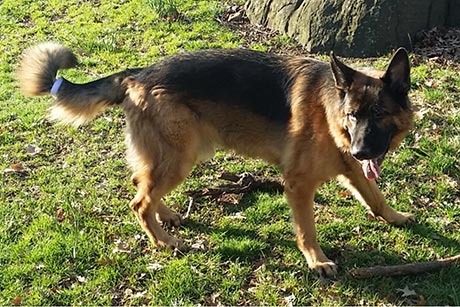Dog tail tracker, circuit printer win $10K prizes
By Anne Ju

A student startup company is helping dog lovers connect better with their canine companions – through their tails.
The startup, DogStar, was a winner of this year’s $10,000 ECE Innovation Award, announced earlier this month. The annual competition challenges students to design and develop technology based on electrical and computer engineering and to demonstrate the idea’s business potential.
The other ECE Innovation Award went to Rapid Circuit Plotter, a functional, inexpensive desktop circuit printer that Feiran Chen ’15 and Connor Archard ’15 developed during an ECE class on microcontrollers.
DogStar began as a semesterlong project by Cornell Tech MBA students Michael Karp, Yanni Tsampalis and Li Guo, all MBA ’15. For the competition, they pitched the DogStar tail tracker, which consists of a hardware piece attached to the dog’s tail, and a mobile interface that tracks and reads the tail’s movement.
“Tail position is how dogs convey their emotions, and humans cannot always interpret these complex patterns accurately,” Tsampalis said.
A key challenge was coming up with a device a dog wouldn’t mind having attached to its tail. They recruited friends and family to allow them to test different designs on their unsuspecting dogs. They also consulted with dog behavioral specialists from the College of Veterinary Medicine.
The award money will go toward a custom-printed circuit board for the tail tracker. The inventors are working toward a prototype suitable for beta testing – the next big milestone for their startup.
Rapid Circuit Prototyping, which makes Rapid Circuit Plotter, already had taken home the GE: IT Imagination at Work Award and the Google Moonshot Award at BOOM (Bits on our minds) this year, March 25.
Their product: a circuit printer controlled via a local network. Using electrically conductive ink, a pen plotter quickly creates circuits drawn on a Web application.
“People were more excited about the project than I had anticipated,” Archard said. “Now I think we are going to move forward to get a more polished product put together.”
Get Cornell news delivered right to your inbox.
Subscribe